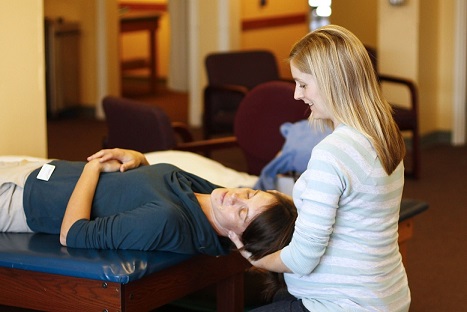Benign paroxysmal positional vertigo (BPPV) or sudden dizziness may seem harmless, but many people find it inconvenient and frightening too. The good thing is that you can try a simple and inexpensive technique called the Epley maneuver to reposition the canalith, therefore treat BPPV. Let's find out how to perform the Epley maneuver for vertigo.
How Does Epley Maneuver Help Vertigo?
You experience an episode of sudden dizziness when the calcium carbonate crystals, which are usually in the utricle, move to one or more of the 3 fluid-filled semicircular canals. The Epley maneuver works because it involves moving your head into different positions firmly, so that the crystal debris that causes vertigo moves to an area of the inner ear. You can feel better when the debris slips out of the semicircular canal.
How Epley Maneuver Is Performed by the Doctor

You can visit your doctor to have Epley maneuver performed. They will proceed in the following way:
- Firstly, you will have to sit on the exam table with legs extended in front of you. Your doctor will ask you to turn your head in a way that it is halfway between looking to the uncomfortable side and looking straight ahead. Then he or she will make you lay on the table with your shoulders on the table but head still hanging over the edge of the exam table, and with the side of your head facing the floor. You will stay in this position for 30 seconds.
- Secondly, your doctor will wait for the vertigo to stop and then turn your head to the opposite side without lifting it up. By this way, the other side of your head will now be facing the floor. You will have to stay in this position for another 30 seconds or until you no longer experience symptoms of vertigo.
- Thirdly, they will make you roll in the direction you are facing. This will make you be on your side with the side causing vertigo facing up. You will have to stay in this position for another 30 seconds or longer if your vertigo continues.
- Lastly, your doctor will help you return to the starting position with your legs hanging off the edge of the table.
How to Apply Epley Maneuver at Home

If you do not want to visit the doctor, you can also learn to perform the Epley maneuver for vertigo at home.
In case your vertigo hits you from your left ear and side:
- Sit on the edge of your bed with your head turned 45-degree to your left. Grab a pillow and place it on the bed in a way that it comes between your shoulders as you lie down.
- With your face up, quickly lie down on the bed with the pillow right underneath your shoulders. Wait for 30 seconds or until your vertigo stops.
- Slowly turn your head at a 90-degree angle to the right, but do not lift it up. Wait until vertigo stops.
- Turn your body along with your head to the right until you start facing the floor. Wait again for a few seconds or until any signs of vertigo go away.
- Slowly return to the starting position but do not leave your bed for a few minutes.
If your vertigo comes from the right ear, you should follow the same instructions but in reverse. That means, instead of turning your head to the left, you should turn it 45-degree to the right and so on. Repeat the maneuver at least thrice before you go to bed.
Tips After Epley Maneuver for Vertigo
1. Do Not Leave Doctor's Office Immediately
You should wait for at least 10 minutes before leaving your doctor's office. That is important because it takes time for the debris to settle. Shaking it up again may make you experience the symptoms of vertigo soon after you leave the doctor's office.
2. Wear a Collar
To make you feel better, consider wearing a soft collar for the rest of the day after the maneuver. This soft neck brace helps control your head movements and keeps you from shaking up the debris unintentionally.
3. Maintain a Better Sleep Position
You should take some care when sleeping at night. Make certain arrangements to help keep your head at a 45-degree angle while sleeping. You can use some pillows to prop yourself up or consider sleeping in a reclining chair.
4. Keep Your Head in a Vertical Position
It might not be easy but you should try to keep your head vertical for as long as you can. Avoid exercises or activities that make you bend your neck or tilt your head. Stand right under the shower when taking a bath to avoid tilting your head back. Never let your head tilt back more than 30 degrees.
5. Other Tips
- Work with a trained therapist to have the Epley maneuver performed for the first few times before you perform it at home.
- The Epley maneuver is effective for BPPV only and you should try it if you have already been diagnosed with this condition.
- Consider performing the Epley maneuver for vertigo before going to bed.
